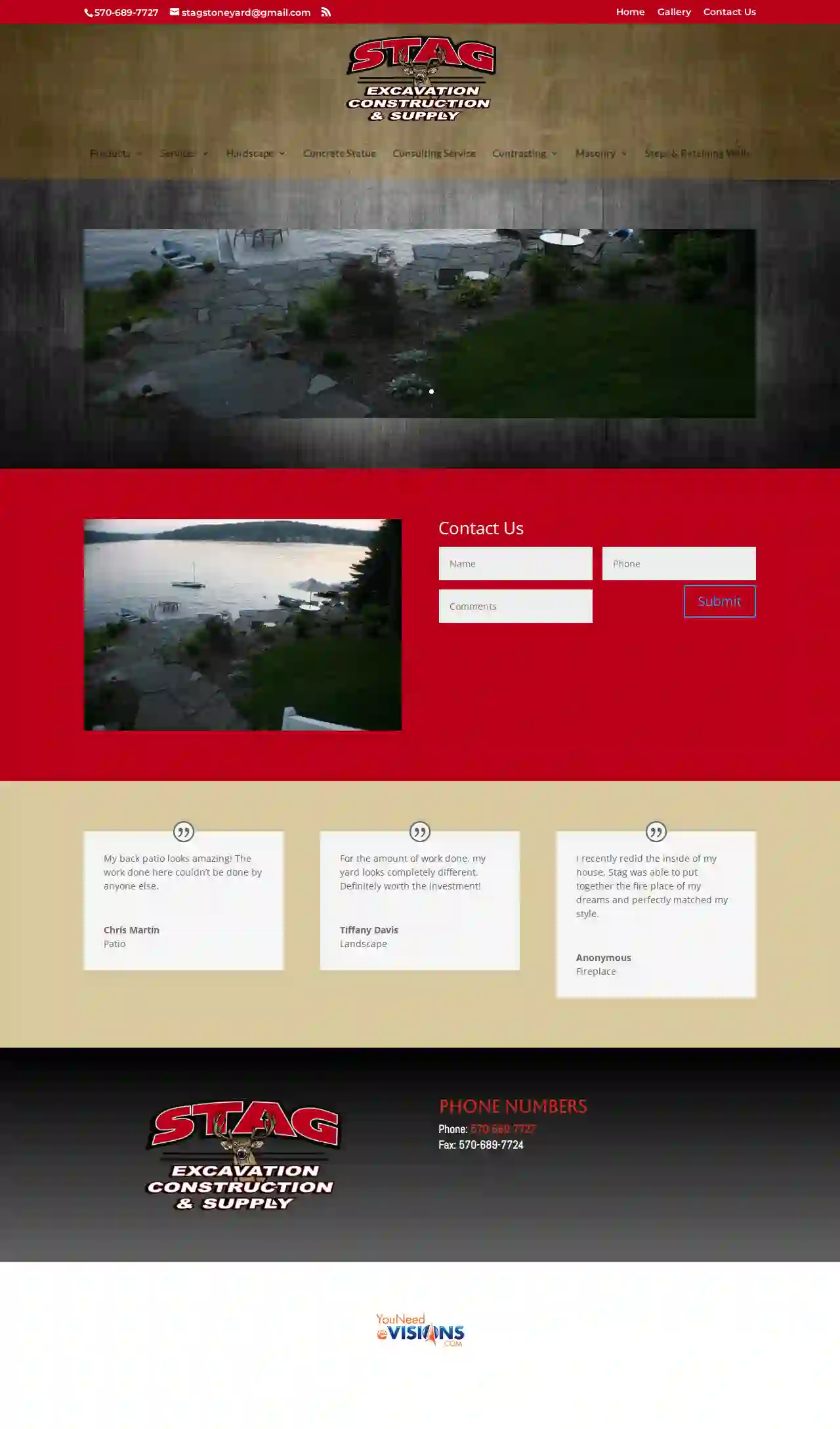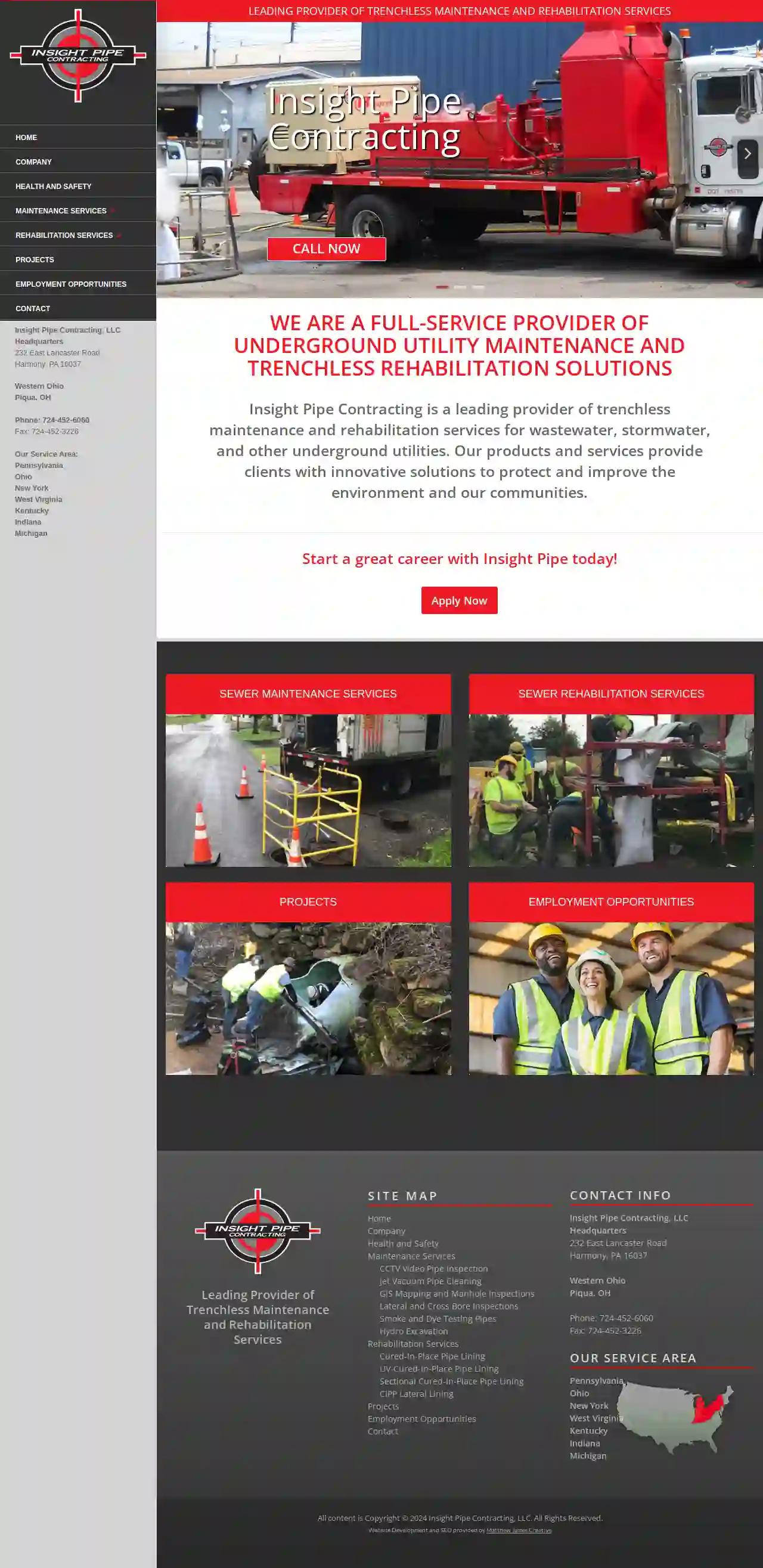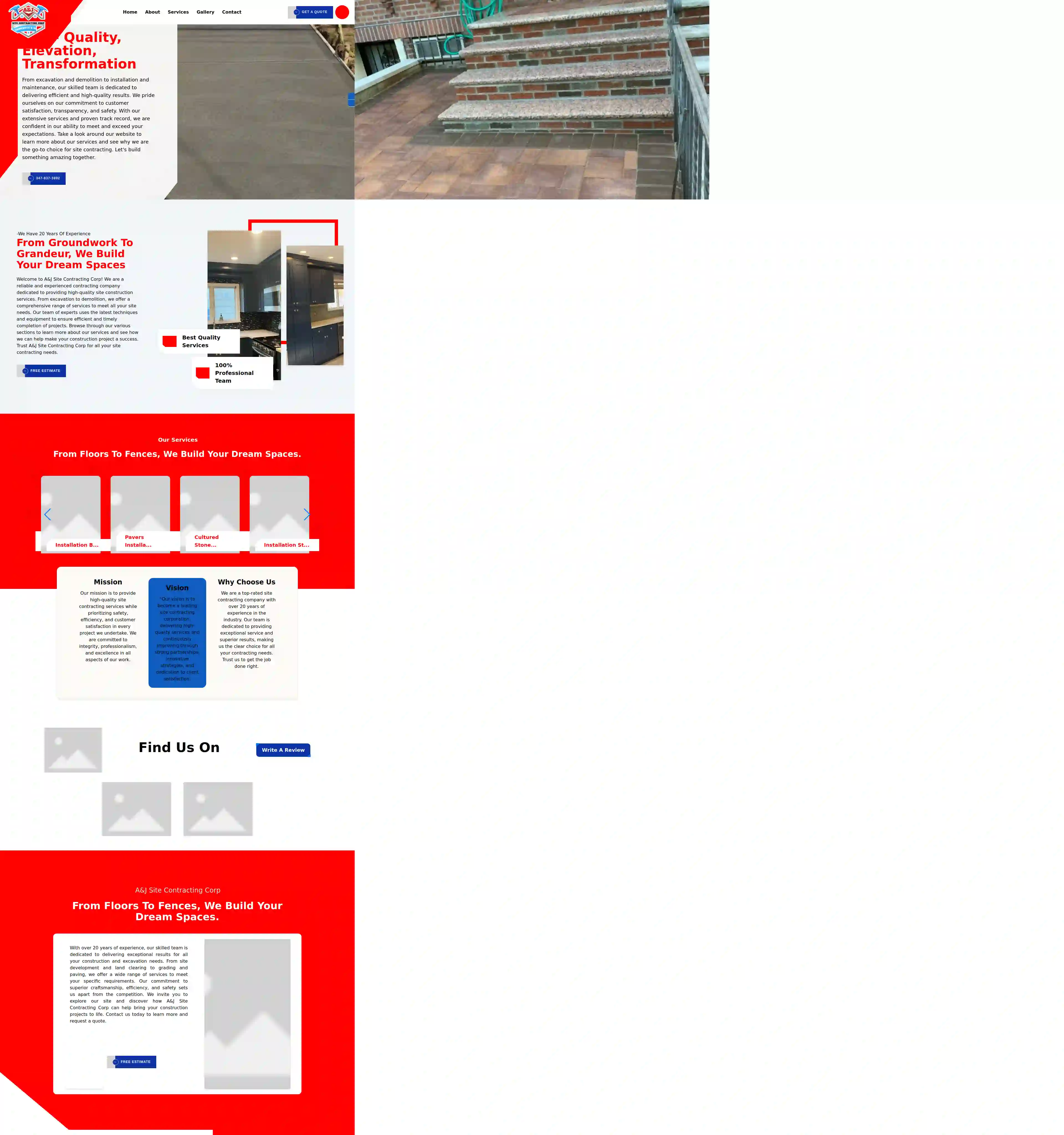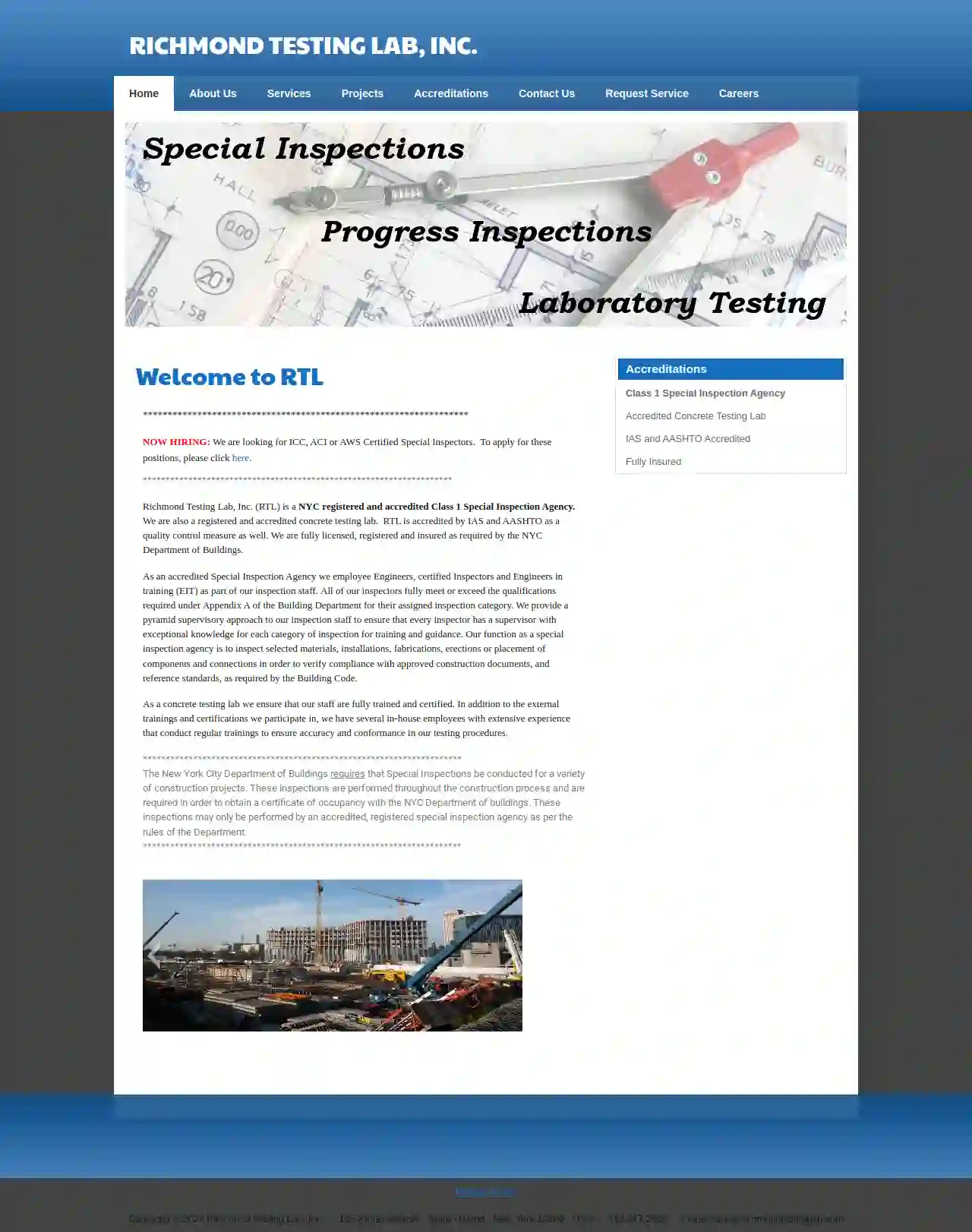Demolition Contractors West Earl
Best Demo Contractors in West Earl
Get multiple Demolition Contractors Near Me quotes for your project today! Compare profiles, reviews, accreditations, portfolio, etc... and choose the best service.

ES Excavation
56 reviewsESExcavation.com, Newtown Square, Pennsylvania, 19073, USExcavation Contractors serving Southeast PA If you are a residential or commercial customer in Southeast PA and the surrounding region, ES Excavation is here to help anytime you need someone to dig in the dirt. We are a full-service excavating contractor, and can also provide you with landscape design and storm water solutions. We aim to complete each of our projects in an efficient and cost-effective way. We don’t cut corners and we always take proper precautions to prevent any potential problems and dangers while striving to ensure that the project is complete on time and under budget. We take the time to meet with all of our clients to ensure that every project is completed to their standards. Providing us with your vision, goals and timeline allows us to do our job even better. Every client we meet and do business with is satisfied with our work. That’s because we work with you, and have a genuine interest in achieving your project goals.
- Services
- Why Us?
- Gallery
Get Quote
Stag Excavation Construction & Supply
52 reviewsHamlin, USStag Excavation & Stone Yard Stag Excavation & Stone Yard is a family-owned and operated business serving the Hamlin, PA area. We offer a wide range of services, from excavating and demolition to hardscaping and custom home construction. We are committed to providing our clients with high-quality workmanship and exceptional customer service. Our team of experienced professionals is dedicated to exceeding your expectations and delivering projects on time and within budget. We are proud to be a trusted name in the community and look forward to serving your needs. We are located just outside of Hamlin Corners in Hamlin PA. We offer free estimates on all of our services. Contact us today to schedule a consultation.
- Services
- Why Us?
- Testimonials
- Gallery
Get Quote
CAG Construction Corporation
1540 Castleton Ave., Staten Island, USCAG CONSTRUCTION CORP. CONSTRUCTION DONE RIGHT Our experience ensures that your projects will be completed within budget, on time and with the upmost professionalism. LEARN MORE Family Run and Operated Construction Company Since 2007
- Services
- Why Us?
- Gallery
Get Quote
Brubacher Excavating Inc
4.561 reviews825 Reading Road, P.O. Box 528, Bowmansville, 17507, USAt the heart of our company are hundreds of team members who apply decades of experience to deliver Insight. On Site in service our clients and communities as we live out our mission of Shaping the World We Live In. Their character, commitment, and expertise combined with our integrated services and industry-leading fleet ensure we deliver quality results from start to finish. As an excavating company who proudly serves partners across Pennsylvania, Maryland and Delaware, we provide specialized industry expertise to deliver total client satisfaction. You can count on our team to work safely and efficiently and to get the job done right on time, every time. Our Core Values At Brubacher, we honor our core values as a team in the decisions we make, results we deliver, and experiences we provide. Safety Because Life Matters Integrity Do What Is Right Initiative Make It Happen Teamwork Better Together
- Services
- Why Us?
- Gallery
Get Quote
Insight Pipe Contracting, LLC
3.912 reviews232 East Lancaster Road, Harmony, 16037, USInsight Pipe Contracting, LLC Insight Pipe Contracting is a leading provider of trenchless maintenance and rehabilitation services for wastewater, stormwater, and other underground utilities. Our products and services provide clients with innovative solutions to protect and improve the environment and our communities.
- Services
- Why Us?
- Gallery
Get Quote
Big Horn Excavating LLC
Lykens, PA, 17048, USExcavation Company It doesn’t matter whether an excavation job is straightforward or complex, every project could benefit from professionalism—and that is why so many people look to Big Horn Excavating LLC when they are in need. Offering exceptional excavation services, we are the contractors that set big projects in motion. We work alongside landscapers, homeowners, and general contractors on a regular basis. So whether you are looking for someone to prepare a site for basement construction or dredge silt and muck from a community pond, we are the ones you can count on. Skilled in All Excavation Services We pride ourselves on our versatile nature. Our contractors might find themselves offering services to aid in installing a stormwater drain one day, only to be excavating earth and topsoil for a backyard pond the next day. Some of the additional excavation services we offer include: Earth moving Grading Rock removal Basement excavation Site preparation services And more With so many services at your disposal, you will never have to look to another excavation team ever again. Reach out to us today to learn more about the services we offer. All the Excavation Equipment Needed Every excavation project is different. Thankfully, we are always prepared for whatever obstacle comes our way. Between our years of experience and vast storehouse of equipment, our accredited team always rises to the occasion. We move mountains for our clients—along with topsoil, earth, rock, and debris. When your upcoming project calls for an excavator, look to us. Serving the Entire Community We deliver grading and excavation solutions for industries and individuals of all distinctions. Some of the professionals we commonly work with include: Real estate developers Municipal construction operations Engineers Architecture firms General contractors Utility companies Our versatile nature allows us to envision the entire scope of our client’s construction projects. In doing so, we lay the best foundation possible for all the work to come. If you would like to learn more about our services, please feel free to contact our offices at your convenience. Excavation and Excellent Customer Service When it comes to your construction projects, you only want professionals on site. Rest assured, you will absolutely love our professional yet personable approach to excavation. We are always happy to answer your questions and address any concerns you might have.
- Services
- Why Us?
- Gallery
Get Quote
Superior Earth Works, LLC
51 reviewsBel Air, Maryland, USIntroducing Superior Earth Works, LLC Transforming project visions into reality is our specialty at Superior Earth Works. Based in Bel Air, MD, we dedicate ourselves to providing top-quality excavation and concrete services for residential and commercial clients. Our goal is to achieve excellence in every project. By understanding our clients' needs and delivering beyond their expectations, we ensure that each project stands as a testament to superior craftsmanship and dedication. We believe that quality workmanship is the cornerstone of our business, and we strive to maintain the highest standards in every project, along with timely delivery and reasonable prices. As an experienced excavation contractor, we specialize in site clearing, ensuring that your land is ready for any new construction. Our demolition services are efficient and thorough, making way for new possibilities. With our bobcat services, we handle everything from land grading to site preparation with precision and care. Our expertise includes shoring services, providing the necessary support to safeguard your construction projects. Whether you require land demolition, grading, regrading, or resloping services, we have the skills and equipment to execute the job to perfection. We deliver impeccable building site preparation and construction site preparation. In addition to our excavation capabilities, we offer a full suite of concrete services. From driveways to patios, we deliver concrete work that enhances the utility and visual appeal of your property. Our concrete services are designed to withstand the test of time, providing durable and attractive surfaces that you can rely on. Choosing Superior Earth Works means choosing an excavation partner who values your project and strives to achieve superior results. Experience the difference that our dedication to excellence can make -- contact us today to discuss your excavation needs. Superior Earth Works in Bel Air, MD, is here to provide you with the superior service you deserve.
- Services
- Why Us?
- Gallery
Get Quote
A&J Site Contracting Corp
57 reviewsYork, USA&J - Quality, Elevation, Transformation From excavation and demolition to installation and maintenance, our skilled team is dedicated to delivering efficient and high-quality results. We pride ourselves on our commitment to customer satisfaction, transparency, and safety. With our extensive services and proven track record, we are confident in our ability to meet and exceed your expectations. Take a look around our website to learn more about our services and see why we are the go-to choice for site contracting. Let's build something amazing together. -we have 20 years of experience From groundwork to grandeur, we build your dream spaces Welcome to A&J Site Contracting Corp! We are a reliable and experienced contracting company dedicated to providing high-quality site construction services. From excavation to demolition, we offer a comprehensive range of services to meet all your site needs. Our team of experts uses the latest techniques and equipment to ensure efficient and timely completion of projects. Browse through our various sections to learn more about our services and see how we can help make your construction project a success. Trust A&J Site Contracting Corp for all your site contracting needs.
- Services
- Why Us?
- Our Team
- Gallery
Get Quote
Richmond Testing Lab Inc
52 reviews135 Storer Avenue, Staten Island, 10309, USWelcome to Richmond Testing Lab, Inc. (RTL) Richmond Testing Lab, Inc. (RTL) is a NYC registered and accredited Class 1 Special Inspection Agency. We are also a registered and accredited concrete testing lab. RTL is accredited by IAS and AASHTO as a quality control measure as well. We are fully licensed, registered and insured as required by the NYC Department of Buildings. As an accredited Special Inspection Agency, we employ Engineers, certified Inspectors, and Engineers in training (EIT) as part of our inspection staff. All of our inspectors fully meet or exceed the qualifications required under Appendix A of the Building Department for their assigned inspection category. We provide a pyramid supervisory approach to our inspection staff to ensure that every inspector has a supervisor with exceptional knowledge for each category of inspection for training and guidance. Our function as a special inspection agency is to inspect selected materials, installations, fabrications, erections or placement of components and connections in order to verify compliance with approved construction documents, and reference standards, as required by the Building Code. As a concrete testing lab, we ensure that our staff are fully trained and certified. In addition to the external trainings and certifications we participate in, we have several in-house employees with extensive experience that conduct regular trainings to ensure accuracy and conformance in our testing procedures. The New York City Department of Buildings requires that Special Inspections be conducted for a variety of construction projects. These inspections are performed throughout the construction process and are required in order to obtain a certificate of occupancy with the NYC Department of buildings. These inspections may only be performed by an accredited, registered special inspection agency as per the rules of the Department.
- Services
- Why Us?
- Accreditations
- Gallery
Get Quote
Ironstone Excavating
4.58 reviews2551 Mill Road, Elizabethtown, 17022, USIronstone Excavating: Your Premier Excavation Company Ironstone Excavating is your one-stop excavating service company, proudly serving Lancaster, Dauphin, York, Lebanon Counties, and beyond. We understand the importance of a strong foundation for any structure, and we're committed to providing the highest quality excavation services to ensure your project is built to last. We offer a wide range of services, including: Excavation for residential, commercial, and agricultural projects Utility line installation and replacement Demolition services for fire damage and other property issues Septic system installation and maintenance Our team of experienced professionals is dedicated to providing exceptional service and ensuring your satisfaction. We use the latest equipment and techniques to complete your project on time and within budget. Contact us today for a free estimate and let us help you build a solid foundation for your future.
- Services
- Why Us?
- Testimonials
- Gallery
Get Quote
Over 22,076+ Excavation Pros on our platform
Our excavation companies operate in West Earl and surrounding areas!
ExcavationHQ has curated and vetted Top Excavation Contractors in and around West Earl. Find the most reliable pro today.
Frequently Asked Questions About Demolition Contractors
- Implosion: Using explosives to collapse a structure inwards rapidly. Suitable for large buildings in open areas.
- Wrecking Ball: Swinging a large steel ball to impact and break down the structure. Effective for bringing down walls and other solid elements.
- High-Reach Demolition: Utilizing specialized excavators with extended arms and demolition attachments for dismantling tall structures piece by piece.
- Selective Demolition: Removing specific parts of a building while preserving other sections. Often used in renovation projects.
- Deconstruction: Carefully dismantling a building to salvage reusable materials, reducing waste and environmental impact.
- General Liability Insurance: Covers bodily injury or property damage to third parties caused by the contractor's negligence.
- Workers' Compensation Insurance: Provides benefits to workers injured on the job.
- Pollution Liability Insurance: Covers costs associated with environmental contamination caused by demolition activities.
- Professional Liability Insurance: Protects against claims of negligence or errors in professional services, such as demolition planning or consulting.
What is a demolition bond?
What are the different types of demolition?
What is the importance of insurance in demolition projects?
Do I need a permit for demolition?
What is a demolition bond?
What are the different types of demolition?
- Implosion: Using explosives to collapse a structure inwards rapidly. Suitable for large buildings in open areas.
- Wrecking Ball: Swinging a large steel ball to impact and break down the structure. Effective for bringing down walls and other solid elements.
- High-Reach Demolition: Utilizing specialized excavators with extended arms and demolition attachments for dismantling tall structures piece by piece.
- Selective Demolition: Removing specific parts of a building while preserving other sections. Often used in renovation projects.
- Deconstruction: Carefully dismantling a building to salvage reusable materials, reducing waste and environmental impact.
What is the importance of insurance in demolition projects?
- General Liability Insurance: Covers bodily injury or property damage to third parties caused by the contractor's negligence.
- Workers' Compensation Insurance: Provides benefits to workers injured on the job.
- Pollution Liability Insurance: Covers costs associated with environmental contamination caused by demolition activities.
- Professional Liability Insurance: Protects against claims of negligence or errors in professional services, such as demolition planning or consulting.